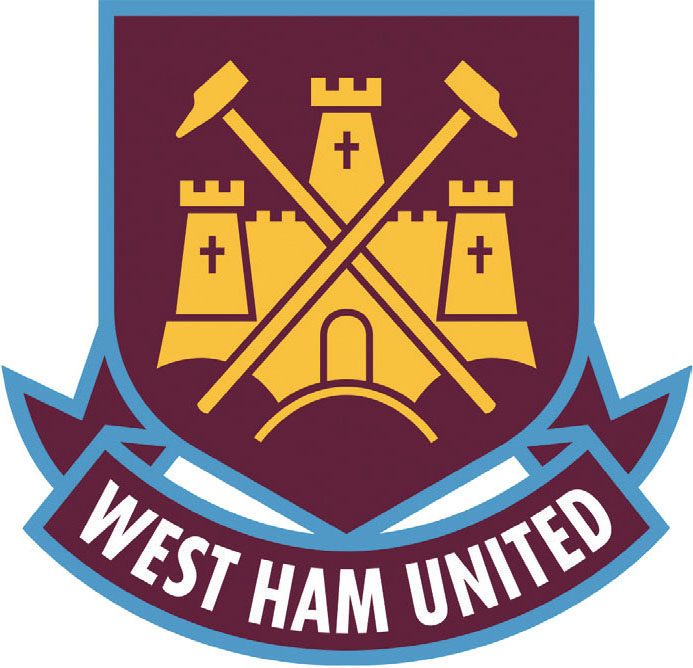
WEST HAM UNITED
HAMMERS AND HERITAGE
For more than 100 years, West Ham United has been represented by two riveting hammers, which is not strange considering the history of the club and the area. West Ham were originally founded in 1895 as Thames Ironworks, as a football club for the area’s iron and dock workers and those in the heavy industry associated with shipbuilding. At the end of the 1800s, industry was thriving in London, not least in the East End district of Newham where West Ham United have their roots.
During the latter part of the 20th century, West Ham established themselves as one of England’s iconic clubs. They lacked title success, but became popular, particularly in the 1960s, thanks to their attacking, entertaining brand of football. This established their reputation as the Academy of Football, and during this period they won the FA Cup in 1964 and the European Cup Winners’ Cup the following year.
The crest has always reflected the soul of the area, but has also developed over time. For instance, the local Boleyn Castle was incorporated in the 1960s.
Like so many other clubs, even the legendary West Ham has been subject to the forces of modernity, and in 2016 they moved from the Boleyn Ground (aka Upton Park) to the London Olympic Arena. The Boleyn Castle was removed from the crest – partly to illustrate the move and partly to clarify the connection to the club’s roots, by leaving only the two hammers as their symbol.
CLUB: West Ham United FC
NICKNAMES: The Irons and The Hammers
FOUNDED: 1895
STADIUM: London Stadium, London (57,000 capacity)
HISTORIC PLAYERS: Bobby Moore, Geoff Hurst, Trevor Brooking, Tony Cottee, Julian Dicks, Joe Cole, Michael Carrick and Paolo Di Canio

1958–1997. It is unclear precisely when the two hammers became symbols for West Ham United. The earliest known image of them comes from a match programme from the 1910/11 season. When the club was promoted to the top division in 1958, the castle and the two hammers were shown together for the first time. It would take until the mid-1960s before the castle was officially included in the emblem though. The castle is said to have been the home of Anne Bolyen, the second wife of Henry VIII. This particular logo is from 1987.

1997–2016. In 1997, the designers Springett Associates were given the task of updating the crest. The castle was widened, there were fewer windows, and the peaks of the towers disappeared. (The earlier castle was thought to look like something from a Disney film.)

2016–present. In July 2014 the club’s members were given the opportunity to vote on a new emblem that would be introduced to coincide with the move to the new stadium in the autumn of 2016. In this new design the castle is gone, and the name of the city has appeared, which suggests that the club wants to establish itself on the wider international scene. The form of the emblem was inspired by the British navy frigate HMS Warrior, which was built in 1860 by Thames Ironworks.

Hammers legend Bobby Moore takes flight in 1962 with the famous irons respendent on his chest. The 2016 crest is a clear return to these design origins.